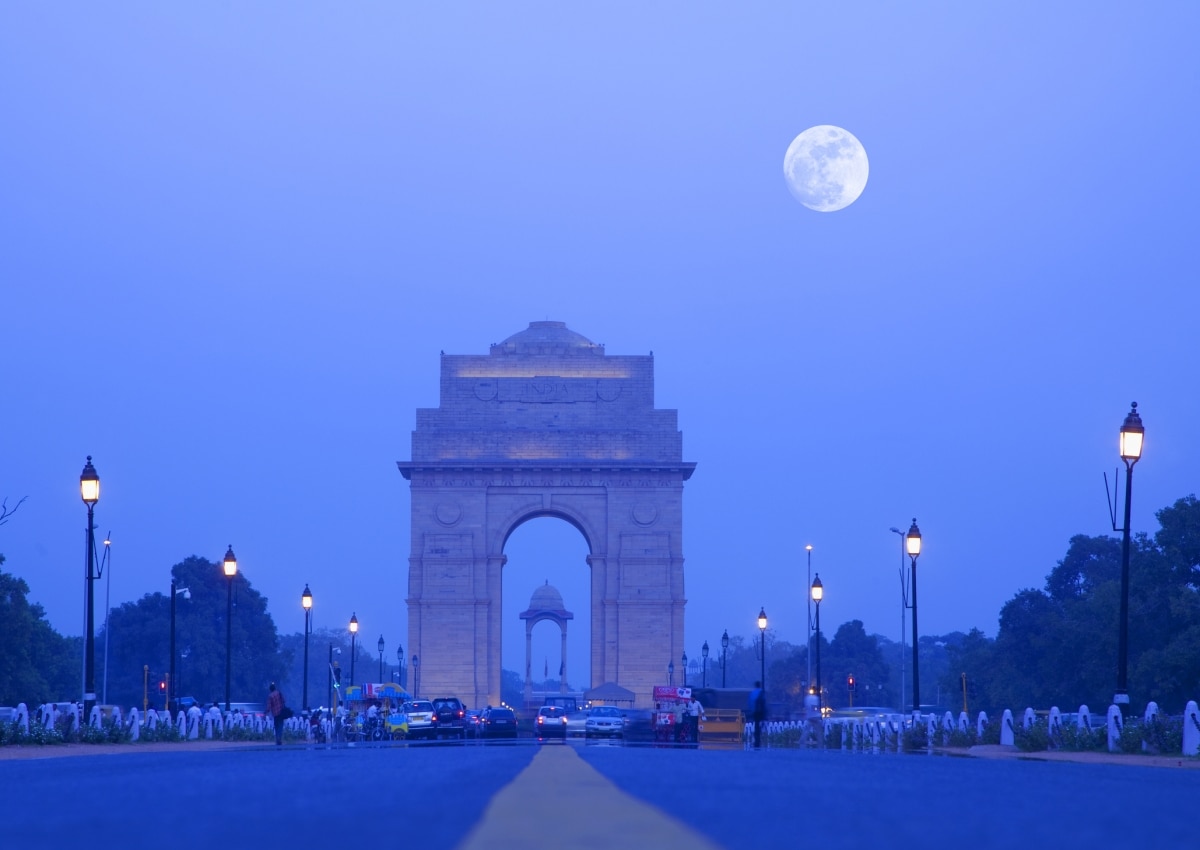What is a Blue Moon?
A Blue Moon will rise on the night of October 31. It is a rare event that just fits the phrase 'once in a blue moon'. Read on to know more about what a Blue Moon is.

The night of October 31 will be witness to something that happens once in a blue moon, quite literally. And, what is that? Well, a Blue Moon. It may sound mysterious and exciting, but let us calm you down: A Blue Moon is nothing but a vanilla Full Moon that rises in the sky 12 times every year.
So why the colourful name? We'll explain.
There are 12 Full Moons in a year, i.e. one every month. Over time, several cultures started giving names to each Full Moon. There is no convention for naming Full Moons, nor are the names currently in popular use (we have the full list at the end) set in stone.
SO, WHAT IS A BLUE MOON?
Well, traditionally a Blue Moon is the third full Full Moon of a season (spring, summer, autumn or winter). But, as the National Aeronautics and Space Administration (Nasa) explains, somewhere along the line, this traditional definition got misinterpreted and became: The second Full Moon in a month. The old definition is still in use. And so, now we have a seasonal Blue Moon and a monthly Blue Moon. The October 31 Blue Moon is the monthly kind (the first Full Moon of this month was on October 1-2).
WHY IS IT CALLED BLUE MOON?
The name has got something to do with the phrase 'once in a blue moon'. According to the Nasa, in 1883 an Indonesian volcano named Krakatoa exploded sending plumes of ash clouds into the sky. These clouds contain particles of just the right size to scatter away red light. This caused the Moon to appear blue. A rare event.
Now, we generally see 12 Full Moons in a year -- three every four seasons. However, since each Full Moon is separated by 29.5 days, this means that it takes 354 days for the Moon to complete the 12 full phases. The leftover days of the year keep adding up until once every two -and-a-half years, 13 Full Moons appear in one calendar year. This 'extra' Full Moon is a rare event and so it came to be called a Blue Moon.
SO, WILL THE MOON BE BLUE?
Sorry to disappoint you, but no. The October 31 Blue Moon will mostly likely be bright and white like all Full Moons are. However, like we explained above, a blue-coloured Moon is a possibility but requires certain atmospheric conditions that refract light beams in just the right manner.

SO THERE IS NO POINT WATCHING OUT FOR THE BLUE MOON?
Well, a Full Moon is still a Full Moon and is a wonder to look at. According to timeanddate.com, the October 31 Blue Full Moon will be at its complete glory shortly after 8:15 pm. And, oh, while you're at it, don't miss the bright red 'starry' object right next to the Moon. It's not a star, but our neighbour Mars.
WHAT ARE THE OTHER FULL MOONS?
As we explained earlier, there is no convention on naming Blue Moons. But according to National Geographic, these are Full Moon names currently in popular use:
FULL MOON NAMES
January: Wolf Moon
February: Snow Moon
March: Worm Moon
April: Pink Moon
May: Flow Moon
June: Strawberry Moon
July: Buck Moon
August: Sturgeon Moon
September: Harvest Moon
October: Hunter's Moon
November: Beaver Moon
December: Cold Moon
